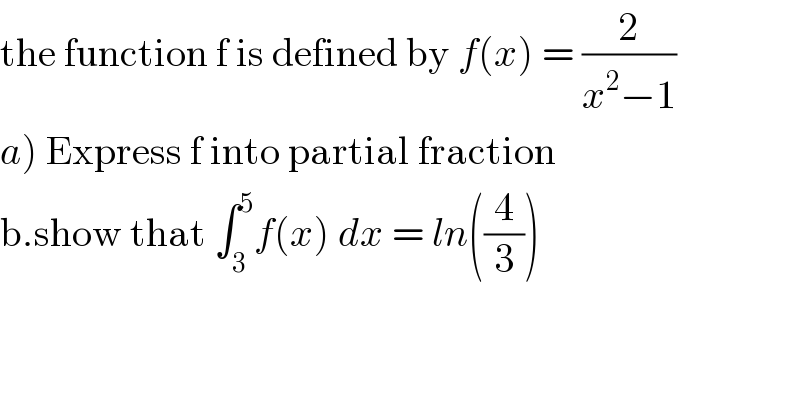
Question and Answers Forum
Question Number 75098 by Rio Michael last updated on 07/Dec/19

Answered by peter frank last updated on 07/Dec/19
![y=(2/((x−1)(x+1))) 2=(A/(x−1))+(B/(x+1)) 2=A(x+1)+B(x−1) A=1 B=−1 y=∫((1/(x−1))−(1/(x+1)))dy y^′ =[ln(((x−1)/(x+1)))]^5 _3 y^′ =ln((2/3))−ln((1/2))=ln((4/3))](Q75103.png)
Commented by Rio Michael last updated on 07/Dec/19

| ||
Question and Answers Forum | ||
Question Number 75098 by Rio Michael last updated on 07/Dec/19 | ||
 | ||
Answered by peter frank last updated on 07/Dec/19 | ||
![y=(2/((x−1)(x+1))) 2=(A/(x−1))+(B/(x+1)) 2=A(x+1)+B(x−1) A=1 B=−1 y=∫((1/(x−1))−(1/(x+1)))dy y^′ =[ln(((x−1)/(x+1)))]^5 _3 y^′ =ln((2/3))−ln((1/2))=ln((4/3))](Q75103.png) | ||
| ||
Commented by Rio Michael last updated on 07/Dec/19 | ||
 | ||